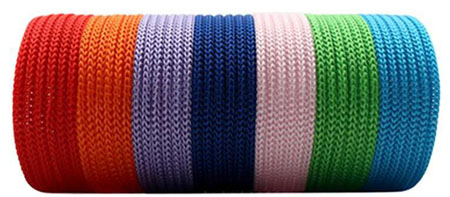Difference between braided rope and twisted rope
Ropes are fibers, yarns, strands or strands that are combined together and twisted or braided to become stronger and larger. Rope has many uses, but because of their thickness compared to cordage, fine rope or twine, they are usually used for hauling or lifting.
Ropes are fibers, yarns, strands or strands that are combined together and twisted or braided to become stronger and larger. Rope has many uses, but because of their thickness compared to cordage, fine rope or twine, they are usually used for hauling or lifting. mesh gabions While they can sometimes be used for similar purposes, they have distinct advantages and disadvantages, and have different strength capabilities.

Braided
Braided ropes are made by weaving 8-10 fibers together to form a tubular braid. Polypropylene and nylon are the two most common forms of material. There are three types of braided ropes.
The first is hollow braided rope, which is made by weaving multiple groups of fibers together to form a tight rope tube with a hollow center.
The second is solid braided rope, which is a complex braid with a filled core, giving it greater strength than hollow braided rope.
The third kind is double braided rope. This kind of rope has a braided core covered with a braided jacket. This braided core makes it stronger than a solid braided rope.
Although the differences between these braided ropes are small, they all have similar advantages and disadvantages.
Pros
â— More flexible
â— Stronger than twisted
â—Smoother to the touch
Disadvantages
â— Difficult to splice
â— Less stretch than twist

Twisted
Twisted ropes are made by twisting fibers into strands and then twisting the strands into a rope. Three-strand twisted rope is the most common form of construction and can be made from nylon, polyester, polyethylene terephthalate and polypropylene.
View the advantages and disadvantages of twisted rope below.
Advantages
â— Easy to splice
â— Cheaper
â— More flexible than braided
â—Better for outdoors
Disadvantages
â— Tends to twist and knot
â— Less flexible
â—Strands may separate if not sealed
Braided and twisted cords also have different strength capabilities. Check out the chart below where we compare the minimum breaking strength of several different sizes of braided and twisted nylon ropes.
| Diameter | Braided | Twisted |
| 1/4" | 1,325 lbs | 1,490 lbs |
| 5/16" | 1,925 lbs | 2,290 lbs |
| 1/2" | 5,300 lbs | 5,750 lbs |
| 5/8" | 7,200 lbs | 9,350 lbs |